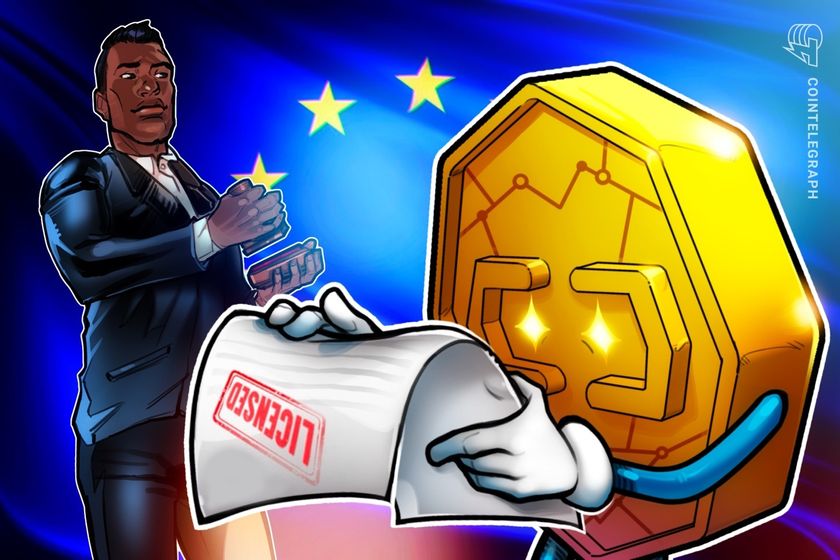

What are tariffs?
Tariffs are taxes placed on imported goods by a government or a supranational union. Occasionally, tariffs can be applied to exports as well. They generate government revenue and serve as a trade regulation tool, often to shield domestic industries.
Four main categories of tariffs are:
- Ad valorem tariffs: These are calculated as a percentage of the good’s value. For instance, a 20% tax might be placed on $100 of goods.
- Specific tariffs: These are fixed fees based on the quantity of goods. For example, there might be a tariff of $5 per imported kilogram of sugar.
- Compound tariffs: These combine a specific duty and an ad valorem duty applied to the same imported goods. Both tariffs are calculated together to determine the total tax. For example, a country might place a tariff on imported wine at $5 per liter plus 10% of the wine’s value.
- Mixed tariffs: Mixed tariffs apply either a specific duty or an ad valorem duty, based on predefined conditions. For instance, for imported trucks, a country might charge either $5,000 per vehicle or 15% of the car’s value, whichever is greater.
The objective of such policy is to influence international trade flows, protect domestic industries, and respond to unfair practices by foreign countries. When a tariff is applied to an imported good, it raises its cost, making domestically produced alternatives more lucrative for customers regarding price.
In the US, the Trump administration uses reciprocal tariffs as a key instrument in influencing the trade policies of other countries. Reciprocal tariffs are trade duties a country imposes in retaliation to tariffs or barriers set by another country. This policy seeks to correct trade imbalances and safeguard domestic industries.
Tariffs are generally collected by the customs departments of a country at ports of entry based on the declared value and classification of goods.
Did you know? Some countries use tariff-rate quotas, allowing a set quantity of a product to be imported at a lower tariff. Once the quota is exceeded, a higher tariff kicks in. This system balances domestic protection with access to global markets, especially in sectors like agriculture and textiles.
Trump administration’s reciprocal tariff policy
US President Donald Trump signed an executive order on April 2, 2025, a day he called Liberation Day, citing his authority under the International Emergency Economic Powers Act (IEEPA). The order placed a minimum 10% tariff on all US imports effective April 5, 2025. Reciprocal tariffs went into effect on April 9, 2025.
Trump stated that the US would apply reciprocal tariffs at roughly half the rate imposed by other countries. For instance, the US imposed a 34% tariff in response to China’s 67%. A 25% tariff on all automobile imports was also announced.

The Trump administration’s reciprocal tariff policy is rooted in the belief that the US faced long-standing trade imbalances and unfair treatment by global trading partners. To address this, his administration pushed for what it called reciprocal tariffs, aiming at setting a tariff structure that matched or at least was close to tariffs that foreign nations imposed on American exports.
Under this approach, the administration used tariff policies to pressure countries to lower their trade barriers or renegotiate trade deals. The policy drew support from domestic manufacturers and labor groups for attempting to rebalance trade and support the US industry. But it also sparked criticism from economists and international allies who viewed it as protectionist and destabilizing the prevalent economic system in the world.
The reciprocal tariffs policy has reshaped US trade relations and marked a departure from decades of multilateral, open global trade policy.
Did you know? Tariffs can reshape supply chains. To avoid high import taxes, companies often relocate manufacturing to countries with favorable trade agreements. This shift doesn’t always benefit consumers, as savings are not always passed down, and logistics become more complex.
The US–China tariff war: A defining economic conflict
The US–China tariff war, which began in 2018 under the first Trump administration, marked a significant shift in global economic relations. The conflict between the world’s two largest economies had broad implications for global supply chains, inflation and geopolitical dynamics.
The trade conflict between the US and China wasn’t just a bilateral spat. It signaled a structural rethinking of trade policy in a multipolar world. The trade war began after the US imposed sweeping tariffs under Section 301 of the Trade Act of 1974, citing unfair trade practices, intellectual property theft and forced technology transfers by China.
Over time, the US levied tariffs on more than $360 billion worth of Chinese goods. China retaliated with tariffs on $110 billion of US exports, targeting key sectors like agriculture and manufacturing.
The conflict disrupted major supply chains and raised costs for American businesses and consumers. American farmers were hit hard by retaliatory Chinese tariffs on soybeans, leading the US government to provide billions in subsidies to offset losses.
While the Phase One Agreement in 2020 eased tensions and required China to increase purchases of US goods and enforce intellectual property protections, many tariffs remained in place. The Biden administration retained most of the economic measures imposed by the first Trump administration, signaling bipartisan concern over China’s trade practices.
As of April 10, 2025, Trump had imposed 125% tariffs on China, while for 75 countries, he had paused the imposition of tariffs for 90 days.

Compared to disputes with allies like the European Union or Canada, the stakes are higher in the US–China conflict, and the consequences are more far-reaching.
Here are the responses of various governments to Trump’s tariffs:
- Canadian Prime Minister Mark Carney implemented a 25% tariff on US-made cars and trucks.
- China will impose a 34% tariff on all US imports, effective April 10.
- The French prime minister described the tariffs as an economic catastrophe.
- Italian Prime Minister Giorgia Meloni criticized the tariffs as wrong.
- European Commission chief Ursula von der Leyen pledged a unified response and prepared countermeasures.
- Taiwan’s government denounced the tariffs as unreasonable.
How do tariffs work?
When a tariff is applied — for example, a 30% tax on imported steel — it raises the price of that good for importers. They, in turn, pass these added costs to downstream businesses, which further transfer these costs to consumers.
For importers, tariffs mean higher purchase costs. If a US company imports machinery from abroad and faces a tariff, its total cost increases. This possibly reduces its profit margins or forces it to search for alternatives. Exporters in other countries may suffer if US buyers reduce orders due to higher prices, hurting their competitiveness.
Domestic producers may benefit initially from a high tariff regime. Tariffs can shield them from cheaper foreign competition, allowing them to increase sales and potentially make profits. But if their operations rely on imported components subject to tariffs, their input costs may rise, offsetting gains.
Consumers often bear the brunt. Tariffs can lead to price hikes on everyday goods — from electronics to apparel. In the long term, high tariffs contribute to inflation and reduce purchasing power.
Tariffs also disrupt global supply chains. Many products are assembled using components from multiple countries. High tariffs on one component can cause delays, prompt redesigns, or force companies to relocate manufacturing, increasing complexity and costs.
Overall, while tariffs aim to protect domestic industries, their impact is felt across the economy through altering prices, trade flows and business strategies. One way or another, tariffs influence everyone — from factory owners to workers and everyday shoppers.
Trump excluded various tech products, such as smartphones, chips, computers and certain electronics, from reciprocal tariffs, providing the tech sector with crucial relief from tariff pressure. This step of Trump eased pressure on tech stocks.
Trump’s tariff announcement on April 2 triggered a sharp sell-off in both equities and Bitcoin (BTC), with BTC plunging 10.5% in a week. Once seen as a non-correlated asset, Bitcoin now trades in sync with tech stocks during macro shocks. According to analysts, institutional investors increasingly treat BTC as a risk-on asset closely tied to policy shifts. While some view Bitcoin as digital gold, recent behavior shows it reacting more like Nasdaq stocks — falling during global uncertainty and rallying on positive sentiment.

Did you know? Tariff exemptions can be highly strategic. Governments may exclude specific industries or companies, allowing them to import goods tariff-free while competitors pay more. This creates an uneven playing field and can spark domestic controversy.
Why do tariffs matter for global markets?
Tariffs are a robust tool in the hands of governments to shape a nation’s economic and trade strategy. They are not merely taxes on imports but a tool that influences domestic production, consumer behavior and global trade relationships.
For the US, tariffs have historically been used to assert economic power on the global stage, protect emerging industries, and respond to unfair trade practices.
When countries with large economies are involved, tariff decisions can impact global supply chains, shift manufacturing hubs, and alter the price of goods worldwide. Even for the smaller countries, in an interconnected world, tariffs matter because their impact goes far beyond national borders.
Domestically, tariffs could boost local industries by making foreign goods more expensive. This can create jobs and support economic resilience in the short term.
Governments getting larger revenue via tariffs will enable them to reduce direct taxes as Trump proposed. But they can also raise prices for consumers, hurt exporters, and trigger retaliation from trade partners.
As geopolitical tensions rise and nations reevaluate their economic dependencies, tariffs have reemerged as a central element of US trade policy.
Whether used defensively or offensively, they shape the balance between protectionism and global engagement. This makes tariffs a matter not just of economics, but of national strategy and global influence.
Who sets tariff policy in the US?
In the US, tariff policy is shaped by a combination of legislative authority, executive power and administrative enforcement. Various agencies also help in the execution of tariff policy.
Congress holds the constitutional authority to regulate trade and impose tariffs. Over time, Congress has given the president significant power to change tariffs for national security, economic threats or trade violations.
The Office of the US Trade Representative plays a central role in formulating and negotiating US trade policy. It leads trade talks, manages disputes, and recommends tariff actions, often in coordination with the president and Congress.
US Customs and Border Protection (CBP) is responsible for enforcing tariffs at ports of entry. CBP collects duties based on the classification and value of imported goods according to the Harmonized Tariff Schedule.
Several major trade laws have shaped tariff policy in the US. The Smoot-Hawley Tariff Act of 1930, aimed at protecting US farmers during the Great Depression, led to retaliatory tariffs and worsened global trade.
Later, the Trade Act of 1974 gave the president tools like Section 301, which was used extensively during the US–China trade war to impose retaliatory tariffs on unfair foreign practices.
Together, these actors and laws form the foundation of US tariff policy.
Criticism of Trump’s tariff policy
Criticism of Trump’s tariff policy surfaced following the announcement of reciprocal tariffs. Critics say this move bypasses Congress and sets a dangerous precedent for unchecked executive power in economic matters.
Detractors argue that these tariffs hurt American businesses more than their intended foreign targets. A Vox article argued that low-income people would be hit more by Trump’s tariffs than by the already reeling Wall Street. Former Treasury Secretary Lawrence Summers fears that America may slip into recession due to tariffs, probably costing 2 million jobs nationwide.

Legal challenges have also emerged regarding Trump’s tariff policy. The New Civil Liberties Alliance (NCLA), a conservative legal group, has filed a lawsuit on behalf of Simplified, a small business based in Florida that sells planners and sources goods from China. The lawsuit claims that the president overstepped his authority under the International Emergency Economic Powers Act (IEEPA) when imposing tariffs in a non-emergency trade context.
Small and mid-sized businesses, many of which rely on global supply chains, will have to deal with rising import costs due to tariffs. This may lead to inflation and reduced competitiveness of such businesses.
While the tariffs might hit China financially in the short term, the action could result in higher prices for US consumers and disrupt operations for American firms if the tariff policy continues for a long time.



